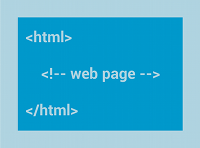In this document
- Write the XML
- Load the XML Resource
- Attributes
- Layout Position
- Size, Padding and Margins
- Common Layouts
- Building Layouts with an Adapter
Key classes
See also
A layout defines the visual structure for a user interface, such as the UI for an activity or app widget. You can declare a layout in two ways:
- Declare UI elements in XML. Android provides a straightforward XML vocabulary that corresponds to the View classes and subclasses, such as those for widgets and layouts.
- Instantiate layout elements at runtime. Your application can create View and ViewGroup objects (and manipulate their properties) programmatically.
The Android framework gives you the flexibility to use either or both of these methods for declaring and managing your application's UI. For example, you could declare your application's default layouts in XML, including the screen elements that will appear in them and their properties. You could then add code in your application that would modify the state of the screen objects, including those declared in XML, at run time.
- The ADT Plugin for Eclipse offers a layout preview of your XML — with the XML file opened, select the Layout tab.
- You should also try the Hierarchy Viewer tool, for debugging layouts — it reveals layout property values, draws wireframes with padding/margin indicators, and full rendered views while you debug on the emulator or device.
- The layoutopt tool lets you quickly analyze your layouts and hierarchies for inefficiencies or other problems.
The advantage to declaring your UI in XML is that it enables you to better separate the presentation of your application from the code that controls its behavior. Your UI descriptions are external to your application code, which means that you can modify or adapt it without having to modify your source code and recompile. For example, you can create XML layouts for different screen orientations, different device screen sizes, and different languages. Additionally, declaring the layout in XML makes it easier to visualize the structure of your UI, so it's easier to debug problems. As such, this document focuses on teaching you how to declare your layout in XML. If you're
interested in instantiating View objects at runtime, refer to the ViewGroup and
View class references.
In general, the XML vocabulary for declaring UI elements closely follows the structure and naming of the classes and methods, where element names correspond to class names and attribute names correspond to methods. In fact, the correspondence is often so direct that you can guess what XML attribute corresponds to a class method, or guess what class corresponds to a given XML element. However, note that not all vocabulary is identical. In some cases, there are slight naming differences. For
example, the EditText element has a text attribute that corresponds to
EditText.setText().
Tip: Learn more about different layout types in Common Layout Objects. There are also a collection of tutorials on building various layouts in the Hello Views tutorial guide.
Write the XML
Using Android's XML vocabulary, you can quickly design UI layouts and the screen elements they contain, in the same way you create web pages in HTML — with a series of nested elements.
Each layout file must contain exactly one root element, which must be a View or ViewGroup object. Once you've defined the root element, you can add additional layout objects or widgets as child elements to gradually build a View hierarchy that defines your layout. For example, here's an XML layout that uses a vertical LinearLayout
to hold a TextView and a Button:
<?xml version="1.0" encoding="utf-8"?>
<LinearLayout xmlns:android="http://schemas.android.com/apk/res/android"
android:layout_width="match_parent"
android:layout_height="match_parent"
android:orientation="vertical" >
<TextView android:id="@+id/text"
android:layout_width="wrap_content"
android:layout_height="wrap_content"
android:text="Hello, I am a TextView" />
<Button android:id="@+id/button"
android:layout_width="wrap_content"
android:layout_height="wrap_content"
android:text="Hello, I am a Button" />
</LinearLayout>
After you've declared your layout in XML, save the file with the .xml extension,
in your Android project's res/layout/ directory, so it will properly compile.
More information about the syntax for a layout XML file is available in the Layout Resources document.
Load the XML Resource
When you compile your application, each XML layout file is compiled into a
View resource. You should load the layout resource from your application code, in your
Activity.onCreate() callback implementation.
Do so by calling setContentView()R.layout.layout_file_name.
For example, if your XML layout is saved as main_layout.xml, you would load it
for your Activity like so:
public void onCreate(Bundle savedInstanceState) {
super.onCreate(savedInstanceState);
setContentView(R.layout.main_layout);
}
The onCreate() callback method in your Activity is called by the Android framework when
your Activity is launched (see the discussion about lifecycles, in the
Activities
document).
Attributes
Every View and ViewGroup object supports their own variety of XML attributes.
Some attributes are specific to a View object (for example, TextView supports the textSize
attribute), but these attributes are also inherited by any View objects that may extend this class.
Some are common to all View objects, because they are inherited from the root View class (like
the id attribute). And, other attributes are considered "layout parameters," which are
attributes that describe certain layout orientations of the View object, as defined by that object's
parent ViewGroup object.
ID
Any View object may have an integer ID associated with it, to uniquely identify the View within the tree.
When the application is compiled, this ID is referenced as an integer, but the ID is typically
assigned in the layout XML file as a string, in the id attribute.
This is an XML attribute common to all View objects
(defined by the View class) and you will use it very often.
The syntax for an ID, inside an XML tag is:
android:id="@+id/my_button"
The at-symbol (@) at the beginning of the string indicates that the XML parser should parse and expand the rest
of the ID string and identify it as an ID resource. The plus-symbol (+) means that this is a new resource name that must
be created and added to our resources (in the R.java file). There are a number of other ID resources that
are offered by the Android framework. When referencing an Android resource ID, you do not need the plus-symbol,
but must add the android package namespace, like so:
android:id="@android:id/empty"
With the android package namespace in place, we're now referencing an ID from the android.R
resources class, rather than the local resources class.
In order to create views and reference them from the application, a common pattern is to:
- Define a view/widget in the layout file and assign it a unique ID:
<Button android:id="@+id/my_button" android:layout_width="wrap_content" android:layout_height="wrap_content" android:text="@string/my_button_text"/> - Then create an instance of the view object and capture it from the layout
(typically in the
onCreate()Button myButton = (Button) findViewById(R.id.my_button);
Defining IDs for view objects is important when creating a RelativeLayout.
In a relative layout, sibling views can define their layout relative to another sibling view,
which is referenced by the unique ID.
An ID need not be unique throughout the entire tree, but it should be unique within the part of the tree you are searching (which may often be the entire tree, so it's best to be completely unique when possible).
Layout Parameters
XML layout attributes named layout_something define
layout parameters for the View that are appropriate for the ViewGroup in which it resides.
Every ViewGroup class implements a nested class that extends ViewGroup.LayoutParams. This subclass
contains property types that define the size and position for each child view, as
appropriate for the view group. As you can see in figure 1, the parent
view group defines layout parameters for each child view (including the child view group).

Figure 1. Visualization of a view hierarchy with layout parameters associated with each view.
Note that every LayoutParams subclass has its own syntax for setting values. Each child element must define LayoutParams that are appropriate for its parent, though it may also define different LayoutParams for its own children.
All view groups include a width and height (layout_width and
layout_height), and each view is required to define them. Many
LayoutParams also include optional margins and borders.
You can specify width and height with exact measurements, though you probably won't want to do this often. More often, you will use one of these constants to set the width or height:
- wrap_content tells your view to size itself to the dimensions required by its content.
- match_parent (named fill_parent before API Level 8) tells your view to become as big as its parent view group will allow.
In general, specifying a layout width and height using absolute units such as pixels is not recommended. Instead, using relative measurements such as density-independent pixel units (dp), wrap_content, or match_parent, is a better approach, because it helps ensure that your application will display properly across a variety of device screen sizes. The accepted measurement types are defined in the Available Resources document.
Layout Position
The geometry of a view is that of a rectangle. A view has a location, expressed as a pair of left and top coordinates, and two dimensions, expressed as a width and a height. The unit for location and dimensions is the pixel.
It is possible to retrieve the location of a view by invoking the methods
getLeft() and getTop(). The former returns the left, or X,
coordinate of the rectangle representing the view. The latter returns the
top, or Y, coordinate of the rectangle representing the view. These methods
both return the location of the view relative to its parent. For instance,
when getLeft() returns 20, that means the view is located 20 pixels to the
right of the left edge of its direct parent.
In addition, several convenience methods are offered to avoid unnecessary
computations, namely getRight() and getBottom().
These methods return the coordinates of the right and bottom edges of the
rectangle representing the view. For instance, calling getRight()
is similar to the following computation: getLeft() + getWidth().
Size, Padding and Margins
The size of a view is expressed with a width and a height. A view actually possess two pairs of width and height values.
The first pair is known as measured width and
measured height. These dimensions define how big a view wants to be
within its parent. The
measured dimensions can be obtained by calling getMeasuredWidth()
and getMeasuredHeight().
The second pair is simply known as width and height, or
sometimes drawing width and drawing height. These
dimensions define the actual size of the view on screen, at drawing time and
after layout. These values may, but do not have to, be different from the
measured width and height. The width and height can be obtained by calling
getWidth() and getHeight().
To measure its dimensions, a view takes into account its padding. The padding
is expressed in pixels for the left, top, right and bottom parts of the view.
Padding can be used to offset the content of the view by a specific number of
pixels. For instance, a left padding of 2 will push the view's content by
2 pixels to the right of the left edge. Padding can be set using the
setPadding(int, int, int, int) method and queried by calling
getPaddingLeft(), getPaddingTop(),
getPaddingRight() and getPaddingBottom().
Even though a view can define a padding, it does not provide any support for
margins. However, view groups provide such a support. Refer to
ViewGroup and
ViewGroup.MarginLayoutParams for further information.
For more information about dimensions, see Dimension Values.
Common Layouts
Each subclass of the ViewGroup class provides a unique way to display
the views you nest within it. Below are some of the more common layout types that are built
into the Android platform.
Note: Although you can nest one or more layouts within another layout to acheive your UI design, you should strive to keep your layout hierarchy as shallow as possible. Your layout draws faster if it has fewer nested layouts (a wide view hierarchy is better than a deep view hierarchy).
Linear Layout

A layout that organizes its children into a single horizontal or vertical row. It creates a scrollbar if the length of the window exceeds the length of the screen.
Relative Layout

Enables you to specify the location of child objects relative to each other (child A to the left of child B) or to the parent (aligned to the top of the parent).
Building Layouts with an Adapter
When the content for your layout is dynamic or not pre-determined, you can use a layout that
subclasses AdapterView to populate the layout with views at runtime. A
subclass of the AdapterView class uses an Adapter to
bind data to its layout. The Adapter behaves as a middleman between the data
source and the AdapterView layout—the Adapter
retrieves the data (from a source such as an array or a database query) and converts each entry
into a view that can be added into the AdapterView layout.
Common layouts backed by an adapter include:
Filling an adapter view with data
You can populate an AdapterView such as ListView or
GridView by binding the AdapterView instance to an
Adapter, which retrieves data from an external source and creates a View that represents each data entry.
Android provides several subclasses of Adapter that are useful for
retrieving different kinds of data and building views for an AdapterView. The
two most common adapters are:
ArrayAdapter- Use this adapter when your data source is an array. By default,
ArrayAdaptercreates a view for each array item by callingtoString()on each item and placing the contents in aTextView.For example, if you have an array of strings you want to display in a
ListView, initialize a newArrayAdapterusing a constructor to specify the layout for each string and the string array:ArrayAdapter<String> adapter = new ArrayAdapter<String>(this, android.R.layout.simple_list_item_1, myStringArray);The arguments for this constructor are:
Then simply call
setAdapter()on yourListView:ListView listView = (ListView) findViewById(R.id.listview); listView.setAdapter(adapter);
To customize the appearance of each item you can override the
toString()method for the objects in your array. Or, to create a view for each item that's something other than aTextView(for example, if you want anImageViewfor each array item), extend theArrayAdapterclass and overridegetView()to return the type of view you want for each item. SimpleCursorAdapter- Use this adapter when your data comes from a
Cursor. When usingSimpleCursorAdapter, you must specify a layout to use for each row in theCursorand which columns in theCursorshould be inserted into which views of the layout. For example, if you want to create a list of people's names and phone numbers, you can perform a query that returns aCursorcontaining a row for each person and columns for the names and numbers. You then create a string array specifying which columns from theCursoryou want in the layout for each result and an integer array specifying the corresponding views that each column should be placed:String[] fromColumns = {ContactsContract.Data.DISPLAY_NAME, ContactsContract.CommonDataKinds.Phone.NUMBER}; int[] toViews = {R.id.display_name, R.id.phone_number};When you instantiate the
SimpleCursorAdapter, pass the layout to use for each result, theCursorcontaining the results, and these two arrays:SimpleCursorAdapter adapter = new SimpleCursorAdapter(this, R.layout.person_name_and_number, cursor, fromColumns, toViews, 0); ListView listView = getListView(); listView.setAdapter(adapter);The
.SimpleCursorAdapterthen creates a view for each row in theCursorusing the provided layout by inserting eachfromColumnsitem into the correspondingtoViewsview.
If, during the course of your application's life, you change the underlying data that is read by
your adapter, you should call notifyDataSetChanged(). This will
notify the attached view that the data has been changed and it should refresh itself.
Handling click events
You can respond to click events on each item in an AdapterView by
implementing the AdapterView.OnItemClickListener interface. For example:
// Create a message handling object as an anonymous class.
private OnItemClickListener mMessageClickedHandler = new OnItemClickListener() {
public void onItemClick(AdapterView parent, View v, int position, long id) {
// Do something in response to the click
}
};
listView.setOnItemClickListener(mMessageClickedHandler);


